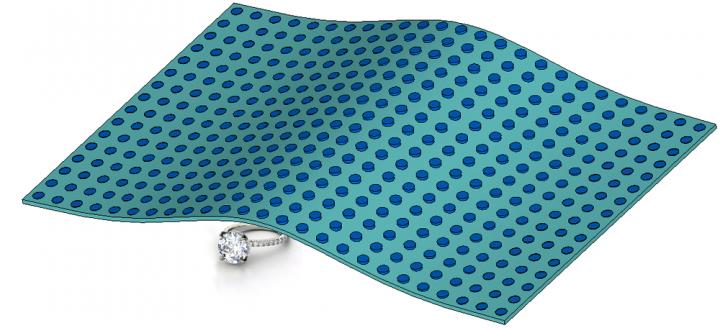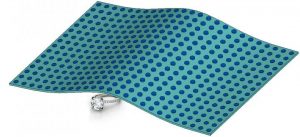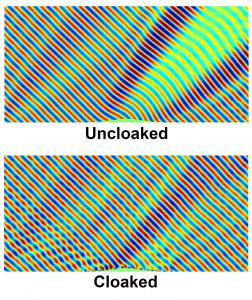
Engineers Develop An Even Better, Thinner Invisibility Cloak
Ah, the super-power of invisibility. It may be a cool ability we all wish we possessed from time to time. Over the past few years, there have been a good deal of advancements in this area – bringing what was once just a motion picture special effect closer to our reality.
Now researchers have updated previous invisibility cloaks by creating an even thinner one that doesn’t alter the brightness of light around a hidden object, like previous models.
Electrical engineers from the University of California, San Diego made such strides with their new technology that its applications involve more than just mere invisibility. It can be used to concentrate solar energy and increase signal speed in optical communications.

“Invisibility may seem like magic at first, but its underlying concepts are familiar to everyone. All it requires is a clever manipulation of our perception,” said Boubacar Kanté, a professor in the Department of Electrical and Computer Engineering at the UC San Diego Jacobs School of Engineering and the senior author of the study. “Full invisibility still seems beyond reach today, but it might become a reality in the near future thanks to recent progress in cloaking devices.”
The whole idea behind invisibility cloaks is to cover objects and make them appear invisible, kind of like an optical illusion. The idea behind cloaking is to change the scattering of electromagnetic waves (such as light and radar) off an object to make it less detectable to these wave frequencies.
The downfall: invisibility cloaks tend to be pretty bulky and really hinder the whole illusion because many layers are required to really hide an object.
But the team didn’t just want to create a thinner invisibility cloak. It also wanted to deal with another traditional drawback of invisibility cloaks – the dead giveaway.
“Imagine if you saw a sharp drop in brightness around the hidden object, it would be an obvious telltale. This is what happens when you use a lossy cloaking device,” said Kanté. “What we have achieved in this study is a ‘lossless’ cloak. It won’t lose any intensity of the light that it reflects.”
The team used non-conductive materials called dielectrics in their upgraded cloak design since they do not absorb light like the metals that are typically used in cloaking devices do. The new cloak is made of proprietary ceramic and Teflon, which change the way light waves reflect off of the cloak.

The engineers created a carpet cloak which fools an observer into thinking there’s a flat surface, when there isn’t. They did this by placing an object on top of a flat surface and then cloaking. The cloak makes the object and the surface actually appear to be flat by showing the reflection of light off of the flat surface. When the object is cloaked it reflects light out of sync and cancels the distortion of light that’s typically caused by an object’s shape.
The team used computer-aided software to improve the cloak’s design, as well as electromagnetic simulation.
The University of California, San Diego engineers then started thinking about how to use their design for other applications.
“We can change the way light waves are being reflected at will and ultimately focus a large area of sunlight onto a solar power tower, like what a solar concentrator does. We also expect this technology to have applications in optics, interior design and art,” said Kanté.
Story via Eureka Alert.
